Time Reversal vs. Integration of Time Reversal with Convolution Neural Network in Diagnosing Partial Discharge in Power Transformer
Abstract
:1. Introduction
2. Factors Influencing the Analysis of the Measurements
2.1. Transformer Characteristics
2.2. Signal Quality Influence
2.3. Analysis Method and Data Pre-Processing Influence
3. Measurement Techniques
3.1. Acoustic Signal Measurements
3.2. Time Reversal Technique
3.3. Convolution Neural Networks (CNNs)
3.4. Time Reversal and CNN
3.5. Conventional Machine Learning-Based PD Diagnosis Approaches
4. The Proposed Methodology
5. Results and Discussion
5.1. Case Study 1: Time Reversal
5.2. Case Study 2: Integration of Time Reversal with CNN
5.3. Case Study 3: Analysis of Time Reversal (TR) and Integration of Time Reversal with Convolution Neural Network (TR-CNN) Techniques
6. Conclusions
Author Contributions
Funding
Data Availability Statement
Conflicts of Interest
References
- Zhu, M.-X.; Wang, Y.-B.; Chang, D.-G.; Zhang, G.-J.; Shao, X.-J.; Zhan, J.-Y.; Chen, J.-M. Discrimination of three or more partial discharge sources by multi-step clustering of cumulative energy features. IET Sci. Meas. Technol. 2019, 13, 149–159. [Google Scholar] [CrossRef]
- Yaacob, M.M.; Alsaedi, M.A.; Rashed, J.R.; Dakhil, A.M.; Atyah, S.F. Review on partial discharge detection techniques related to high voltage power equipment using different sensors. Photonic Sens. 2014, 4, 325–337. [Google Scholar] [CrossRef]
- Fabian, J.; Neuwersch, M.; Sumereder, C.; Muhr, M.; Schwarz, R. State of the Art and Future Trends of Unconventional PD-Measurement at Power Transformers. J. Energy Power Eng. 2014, 8, 1093–1098. [Google Scholar]
- Sinaga, H.H.; Phung, B.T.; Blackburn, T.R. Partial discharge localization in transformers using UHF detection method. IEEE Trans. Dielectr. Electr. Insul. 2012, 19, 1891–1900. [Google Scholar] [CrossRef]
- Jahangir, H.; Akbari, A.; Werle, P.; Szczechowski, J. UHF PD measurements on power transformers-advantages and limitations. IEEE Trans. Dielectr. Electr. Insul. 2017, 24, 3933–3940. [Google Scholar] [CrossRef]
- Ariannik, M.; Azirani, M.A.; Werle, P.; Azirani, A.A. UHF Measurement in Power Transformers: An Algorithm to Optimize Accuracy of Arrival Time Detection and PD Localization. IEEE Trans. Power Deliv. 2019, 34, 1530–1539. [Google Scholar] [CrossRef]
- Bartley, W. Analysis of Transformer Failures. In Proceedings of the 67th Annual International Conference of Doble Clients, Paper 8N, Watertown, MA, USA, 27–31 March 2000. [Google Scholar]
- Hall, M.A. Correlation-Based Feature Selection for Machine Learning. Ph.D. Thesis, University of Waikato, Waikato, New Zealand, 1999. [Google Scholar]
- Duval, M.; de Pabla, A. Interpretation of Gas-in-Oil Analysis Using New IEC Publication 60599 and IEC TC 10 Databases. IEEE Electr. Insul. Mag. 2001, 17, 31–41. [Google Scholar] [CrossRef]
- Acuña, E.; Rodriguez, C. The Treatment of Missing Values and Its Effect on Classifier Accuracy. In Classification, Clustering, and Data Mining Applications; Banks, D., McMorris, F.R., Arabie, P., Gaul, W., Eds.; Springer: Berlin/Heidelberg, Germany, 2004; pp. 639–647. [Google Scholar] [CrossRef]
- Peng, L.; Lei, L.; Naijun, W. A Quantitative Study of the Effect of Missing Data in Classifiers. In Proceedings of the Fifth International Conference on Computer and Information Technology, Shanghai, China, 21–23 September 2005; pp. 28–33. [Google Scholar] [CrossRef]
- Ma, H.; Saha, T.K.; Ekanayake, C. Machine learning techniques for power transformer insulation diagnosis. In Proceedings of the IEEE AUPEC 2011, Brisbane, QLD, Australia, 25–28 September 2011; pp. 1–6. [Google Scholar]
- Guo, C.; Dong, M.; Wu, Z. Fault Diagnosis of Power Transformers Based on Comprehensive Machine Learning of Dissolved Gas Analysis. In Proceedings of the IEEE 20th International Conference on Dielectric Liquids (ICDL), Roma, Italy, 23–27 June 2019; pp. 1–4. [Google Scholar] [CrossRef]
- Liang, Y.; Sun, X.; Liu, Q.; Bian, J.; Li, Y. Fault Diagnosis Model of Power Transformer Based on Combinatorial KFDA. In Proceedings of the International Conference on Condition Monitoring and Diagnosis, Beijing, China, 21–24 April 2008; pp. 956–959. [Google Scholar] [CrossRef]
- Rajesh, K.N.V.P.S.; Rao, U.M.; Fofana, I.; Rozga, P.; Paramane, A. Influence of Data Balancing on Transformer DGA Fault Classification With Machine Learning Algorithms. IEEE Trans. Dielectr. Electr. Insul. 2023, 30, 385–392. [Google Scholar] [CrossRef]
- Raghuraman, R.; Darvishi, A. Detecting Transformer Fault Types from Dissolved Gas Analysis Data Using Machine Learning Techniques. In Proceedings of the IEEE 15th Dallas Circuit And System Conference (DCAS), Dallas, TX, USA, 17–19 June 2022; pp. 1–5. [Google Scholar] [CrossRef]
- Mehta, A.K.; Sharma, R.N.; Chauhan, S.; Saho, S. Transformer diagnostics under dissolved gas analysis using Support Vector Machine. In Proceedings of the International Conference on Power, Energy and Control (ICPEC), Dindigul, India, 6–8 February 2013; pp. 181–186. [Google Scholar] [CrossRef]
- Illias, H.A.; Choon, C.K.; Liang, W.Z.; Mokhlis, H.; Ariffin, A.M.; Yousof, M.F.M. Fault Identification in Power Transformers Using Dissolve Gas Analysis and Support Vector Machine. In Proceedings of the IEEE International Conference on the Properties and Applications of Dielectric Materials (ICPADM), Johor Bahru, Malaysia, 12–14 July 2021; pp. 33–36. [Google Scholar] [CrossRef]
- Sekatane, P.M.; Bokoro, P. Partial Discharge Localization through k-NN and SVM. Energies 2023, 16, 7430. [Google Scholar] [CrossRef]
- Patil, S.D.; Dharme, M.; Patil, A.J.; A K, G.C.; Jarial, R.K.; Singh, A. DGA Based Ensemble learning and Random Forest Models for Condition Assessment of Transformers. In Proceedings of the International Conference on Smart Generation Computing, Communication and Networking (SMART GENCON), Bangalore, India, 23–25 December 2022; pp. 1–6. [Google Scholar] [CrossRef]
- Sekatane, P.M.; Olwal, T.O. Residual life estimation of power transformer based on Karl Fischer and Adaptive neuro-fuzzy interference system. In Proceedings of the IEEE AFRICON, Arusha, Tanzania, 13–15 September 2021; pp. 1–5. [Google Scholar] [CrossRef]
- Sekatane, P.; Bokoro, P. Improving Diagnostic Technique of Moisture Content in Power Transformers Using Adaptive Neuro-Fuzzy Inference System. In Proceedings of the IEEE PES/IAS PowerAfrica, Nairobi, Kenya, 23–27 August 2021; pp. 1–5. [Google Scholar] [CrossRef]
- Sekatane, P.; Jordaan, J.; Bokoro, P. Assessment of moisture content in power transformer based on traditional techniques and Adaptive neuro-fuzzy interference system. In Proceedings of the 11th International Conference on Electrical and Electronics Engineering (ELECO), Bursa, Turkey, 28–30 November 2019; pp. 987–991. [Google Scholar] [CrossRef]
- Magabane, P.; Bokoro, P.; Jordaan, J. A Review of detection and mitigation of negative dissipation factor in high voltage power transformers. In Proceedings of the IEEE AFRICON, Accra, Ghana, 25–27 September 2019; pp. 1–4. [Google Scholar] [CrossRef]
- Rao, U.M.; Fofana, I.; Rajesh, K.N.V.P.S.; Picher, P. Identification and Application of Machine Learning Algorithms for Transformer Dissolved Gas Analysis. IEEE Trans. Dielectr. Electr. Insul. 2021, 28, 1828–1835. [Google Scholar] [CrossRef]
- Laayati, O.; Bouzi, M.; Chebak, A. Design of an oil immersed power transformer monitoring and self diagnostic system integrated in Smart Energy Management System. In Proceedings of the 3rd Global Power, Energy and Communication Conference (GPECOM), Antalya, Turkey, 5–8 October 2021; pp. 240–245. [Google Scholar] [CrossRef]
- Das, S.; Paramane, A.; Chatterjee, S.; Rao, U.M. Sensing Incipient Faults in Power Transformers Using Bi-Directional Long Short-Term Memory Network. IEEE Sens. Lett. 2023, 7, 7000304. [Google Scholar] [CrossRef]
- Souza, F.R.; Ramachandran, B. Dissolved gas analysis to identify faults and improve reliability in transformers using support vector machines. In Proceedings of the Clemson University Power Systems Conference (PSC), Clemson, SC, USA, 8–11 March 2016; pp. 1–4. [Google Scholar] [CrossRef]
- Saha, C.; Baruah, N.; Nayak, S.K. Implementation of Self-Organizing Map and Logistic Regression in Dissolved Gas Analysis of Transformer oils. In Proceedings of the IEEE International Conference on the Properties and Applications of Dielectric Materials (ICPADM), Johor Bahru, Malaysia, 12–14 July 2021; pp. 131–134. [Google Scholar] [CrossRef]
- Rediansyah, D.; Prasojo, R.A.; Suwarno; Abu-Siada, A. Artificial Intelligence-Based Power Transformer Health Index for Handling Data Uncertainty. IEEE Access 2021, 9, 150637–150648. [Google Scholar] [CrossRef]
- Zhang, Z.; Huang, W.-H.; Xiao, D.-M.; Liu, Y.-L. Fault detection of power transformers using genetic programming method. In Proceedings of the 2004 International Conference on Machine Learning and Cybernetics (IEEE Cat. No.04EX826), Shanghai, China, 26–29 August 2004; Volume 5, pp. 3018–3022. [Google Scholar] [CrossRef]
- Kumar, A.H.; Thind, B.S.; Reddy, C.C. Improving Reliability of Transformers based on DGA Analysis using Machine Learning Techniques. In Proceedings of the IEEE Conference on Electrical Insulation and Dielectric Phenomena (CEIDP), Vancouver, BC, Canada, 12–15 December 2021; pp. 151–154. [Google Scholar] [CrossRef]
- Ekanayake, C.; Ma, H.; Saha, T. Past experience and future developments toward the safeguarding of power transformers. In Proceedings of the International Conference on Electrical & Computer Engineering (ICECE 2010), Dhaka, Bangladesh, 18–20 December 2010; pp. 279–282. [Google Scholar] [CrossRef]
- de Andrade Lopes, S.M.; Flauzino, R.A. A Novel Approach for Incipient Fault Diagnosis in Power Transformers by Artificial Neural Networks. In Proceedings of the IEEE PES Innovative Smart Grid Technologies Europe (ISGT Europe), Espoo, Finland, 18–21 October 2021; pp. 1–5. [Google Scholar] [CrossRef]
- Tra, V.; Duong, B.-P.; Kim, J.-M. Improving diagnostic performance of a power transformer using an adaptive over-sampling method for imbalanced data. IEEE Trans. Dielectr. Electr. Insul. 2019, 26, 1325–1333. [Google Scholar] [CrossRef]
- Laayati, O.; El Hadraoui, H.; Bouzi, M.; Chebak, A. Smart Energy Management System: Oil Immersed Power Transformer Failure Prediction and Classification Techniques Based on DGA Data. In Proceedings of the 2nd International Conference on Innovative Research in Applied Science, Engineering and Technology (IRASET), Meknes, Morocco, 3–4 March 2022; pp. 1–6. [Google Scholar] [CrossRef]
- Haque, M.E.; Darus, A.B.; Yaacob, M.M.; Ahmed, F. Diagnosis of GIS based on acoustic sensing technique. In Proceedings of the 1997 Fourth International Conference on Advances in Power System Control, Operation and Management, APSCOM-97. (Conf. Publ. No. 450), Hong Kong, China, 11–14 November 1997; Volume 2, pp. 556–558. [Google Scholar] [CrossRef]
- Braunlich, R.; Hassig, M.; Fuhr, J.; Aschwanden, T. Assessment on insulation condition of large power transformers by on-site electrical diagnostic methods. In Proceedings of the Conference Record of the 2000 IEEE International Symposium on Electrical Insulation, Anaheim, CA, USA, 2–5 April 2000; pp. 368–372. [Google Scholar]
- Wang, X.; Li, B.; Roman, H.T.; Russo, O.L.; Chin, K.; Farmer, K.R. Acousto-optical PD detection for transformers. IEEE Trans. Power Deliv. 2006, 21, 1068–1073. [Google Scholar] [CrossRef]
- Sharkawy, R.M.; Ibrahim, K.; Salama, M.M.A.; Bartnikas, R. Particle swarm optimization feature selection for the classification of conducting particles in transformer oil. IEEE Trans. Dielectr. Electr. Insul. 2011, 18, 1897–1907. [Google Scholar] [CrossRef]
- Rubio-Serrano, J.; Rojas-Moreno, M.V.; Posada, J.; Tarifa, J.M.; Robles, G.; García-Souto, J. Electro-acoustic detection, identification and location of partial discharge sources in oil-paper insulation systems. IEEE Trans. Dielectr. Electr. Insul. 2012, 19, 1569–1578. [Google Scholar] [CrossRef]
- Coenen, S.; Tenbohlen, S. Location of PD sources in power transformers by UHF and acoustic measurements. IEEE Trans. Dielectr. Electr. Insul. 2012, 19, 1934–1940. [Google Scholar] [CrossRef]
- Li, J.; Jiang, T.; Wang, C.; Cheng, C. Optimization of UHF Hilbert antenna for partial discharge detection of transformers. IEEE Trans. Antennas Propag. 2021, 60, 2536–2540. [Google Scholar]
- Hooshmand, R.A.; Parastegari, M.; Yazdanpanah, M. Simultaneous location of two partial discharge sources in power transformers based on acoustic emission using the modified binary partial swarm optimisation algorithm. IET Sci. Meas. Technol. 2012, 7, 119–127. [Google Scholar] [CrossRef]
- Zheng, S.; Li, C.; Tang, Z.; Chang, W.; He, M. Location of PDs inside transformer windings using UHF methods. IEEE Trans. Dielectr. Electr. Insul. 2014, 21, 386–393. [Google Scholar] [CrossRef]
- Sinaga, H.H.; Phung, B.T.; Blackburn, T.R. Recognition of single and multiple partial discharge sources in transformers based on ultra-high frequency signals. IET Gener. Transm. Distrib. 2014, 8, 160–169. [Google Scholar] [CrossRef]
- Cui, L.; Chen, W.; Xie, B.; Du, J.; Long, Z.; Li, Y. Characteristic information extraction and developing process recognizing method of surface discharge in oil immersed paper insulation. In Proceedings of the 2014 International Conference on High Voltage Engineering and Application (ICHVE), Poznan, Poland, 8–11 September 2014; pp. 3–6. [Google Scholar]
- Boczar, T.; Cicho, A.; Borucki, S. Diagnostic expert system of transformer insulation systems using the acoustic emission method. IEEE Trans. Dielectr. Electr. Insul. 2014, 21, 854–865. [Google Scholar] [CrossRef]
- Búa-Núñez, I.; Posada-Román, J.E.; Rubio-Serrano, J.; Garcia-Souto, J.A. Instrumentation system for location of partial discharges using acoustic detection with piezoelectric transducers and optical fiber sensors. IEEE Trans. Instrum. Meas. 2014, 63, 1002–1013. [Google Scholar] [CrossRef]
- Chen, M.K.; Chen, J.M.; Cheng, C.Y. Partial discharge detection by RF coil in 161 kV power transformer. IEEE Trans. Dielectr. Electr. Insul. 2014, 21, 1405–1414. [Google Scholar] [CrossRef]
- Harbaji, M.; Shaban, K.; El-Hag, A. Classification of common partial discharge types in oil-paper insulation system using acoustic signals. IEEE Trans. Dielectr. Electr. Insul. 2015, 22, 1674–1683. [Google Scholar] [CrossRef]
- Mirzaei, H.; Akbari, A.; Gockenbach, E.; Miralikhani, K. Advancing new techniques for UHF PDdetection and localization in the power transformers in the factory tests. IEEE Trans. Dielectr. Electr. Insul. 2015, 22, 448–455. [Google Scholar] [CrossRef]
- Sarkar, B.; Koley, C.; Roy, N.K.; Kumbhakar, P. Condition monitoring of high voltage transformers using Fiber Bragg Grating Sensor. Meas. J. Int. Meas. Confed. 2015, 74, 255–267. [Google Scholar] [CrossRef]
- Qi, Z.; Yi, Y.; Qiaohua, W.; Zhihao, W.; Zhe, L. Study on the online dissolved gas analysis monitor based on the photoacoustic spectroscopy. In Proceedings of the 2012 IEEE International Conference on Condition Monitoring and Diagnosis, Bali, Indonesia, 23–27 September 2012; pp. 433–436. [Google Scholar]
- Seo, J.; Ma, H.; Saha, T. Probabilistic wavelet transform for partial discharge measurement of transformer. IEEE Trans. Dielectr. Electr. Insul. 2015, 22, 1105–1117. [Google Scholar] [CrossRef]
- Mitchell, S.D.; Siegel, M.; Beltle, M.; Tenbohlen, S. Discrimination of partial discharge sources in the UHF domain. IEEE Trans. Dielectr. Electr. Insul. 2016, 23, 1068–1075. [Google Scholar] [CrossRef]
- Rostaminia, R.; Sanie, M.; Vakilian, M.; Mortazavi, S.S.; Parvin, V. Accurate power transformer PD pattern recognition via its model. IET Sci. Meas. Technol. 2016, 10, 745–753. [Google Scholar] [CrossRef]
- Jahangir, H.; Akbari, A.; Werle, P.; Szczechowski, J. Possibility of PD calibration on power transformers using UHF probes. IEEE Trans. Dielectr. Electr. Insul. 2017, 24, 2968–2976. [Google Scholar] [CrossRef]
- Wang, Y.-B.; Chang, D.-G.; Fan, Y.-H.; Zhang, G.-J.; Zhan, J.-Y.; Shao, X.-J.; He, W.-L. Acoustic localization of partial discharge sources in power transformers using a particle-swarmoptimization-route-searching algorithm. IEEE Trans. Dielectr. Electr. Insul. 2017, 24, 3647–3656. [Google Scholar] [CrossRef]
- Ghosh, R.; Chatterjee, B.; Dalai, S. A method for the localization of partial discharge sources using partial discharge pulse information from acoustic emissions. IEEE Trans. Dielectr. Electr. Insul. 2017, 24, 237–245. [Google Scholar] [CrossRef]
- Qian, S.; Chen, H.; Xu, Y.; Su, L. High sensitivity detection of partial discharge acoustic emission within power transformer by sagnac fiber optic sensor. IEEE Trans. Dielectr. Electr. Insul. 2018, 25, 2313–2320. [Google Scholar] [CrossRef]
- Du, J.; Chen, W.; Cui, L.; Zhang, Z.; Tenbohlen, S. Investigation on the propagation characteristics of PD-induced electromagnetic waves in an actual 110 kV power transformer and its simulation results. IEEE Trans. Dielectr. Electr. Insul. 2018, 25, 1941–1948. [Google Scholar] [CrossRef]
- Wang, Y.-B.; Fan, Y.-H.; Qin, S.-R.; Chang, D.-G.; Shao, X.-J.; Mu, H.-B.; Zhang, G.-J. Partial discharge localisation methodology for power transformers based on improved acoustic propagation route search algorithm. IET Sci. Meas. Technol. 2018, 12, 1023–1030. [Google Scholar] [CrossRef]
- Gao, C.; Wang, W.; Song, S.; Wang, S.; Yu, L.; Wang, Y. Localization of partial discharge in transformer oil using Fabry-Perot optical fiber sensor array. IEEE Trans. Dielectr. Electr. Insul. 2018, 25, 2279–2286. [Google Scholar] [CrossRef]
- Si, W.; Fu, C.; Yuan, P. An Integrated Sensor with AE and UHF Methods for Partial Discharges Detection in Transformers Based on Oil Valve. IEEE Sensors Lett. 2019, 3, 2019–2021. [Google Scholar] [CrossRef]
- Ansari, M.A.; Martin, D.; Saha, T.K. Investigation of Distributed Moisture and Temperature Measurements in Transformers Using Fiber Optics Sensors. IEEE Trans. Power Deliv. 2019, 34, 1776–1784. [Google Scholar] [CrossRef]
- Azadifar, M.; Karami, H.; Wang, Z.; Rubinstein, M.; Rachidi, F.; Karami, H.; Ghasemi, A.; Gharehpetian, G.B. Partial Discharge Localization Using Electromagnetic Time Reversal: A Performance Analysis. IEEE Access 2020, 8, 147507–147515. [Google Scholar] [CrossRef]
- Karami, H.; Rachidi, F.; Azadifar, M.; Rubinstein, M. An Acoustic Time Reversal Technique to Locate a Partial Discharge Source: Two-Dimensional Numerical Validation. IEEE Trans. Dielectr. Electr. Insul. 2020, 27, 2203–2205. [Google Scholar] [CrossRef]
- Karami, H.; Azadifar, M.; Mostajabi, A.; Rubinstein, M.; Karami, H.; Gharehpetian, G.B.; Rachidi, F. Partial Discharge Localization Using Time Reversal: Application to Power Transformers. Sensors 2020, 20, 1419. [Google Scholar] [CrossRef] [PubMed]
- Do, T.-D.; Tuyet-Doan, V.-N.; Cho, Y.-S.; Sun, J.-H.; Kim, Y.-H. Convolutional-Neural-Network-Based Partial Discharge Diagnosis for Power Transformer Using UHF Sensor. IEEE Access 2020, 8, 207377–207388. [Google Scholar] [CrossRef]
- Karami, H.; Aviolat, F.Q.; Azadifar, M.; Rubinstein, M.; Rachidi, F. Partial discharge localization in power transformers using acoustic time reversal. Electr. Power Syst. Res. 2022, 206, 107801. [Google Scholar] [CrossRef]
- Karami, H.; Azadifar, M.; Mostajabi, A.; Favrat, P.; Rubinstein, M.; Rachidi, F. Localization of Electromagnetic Interference Sources Using a Time-Reversal Cavity. IEEE Trans. Ind. Electron. 2021, 68, 654–662. [Google Scholar] [CrossRef]
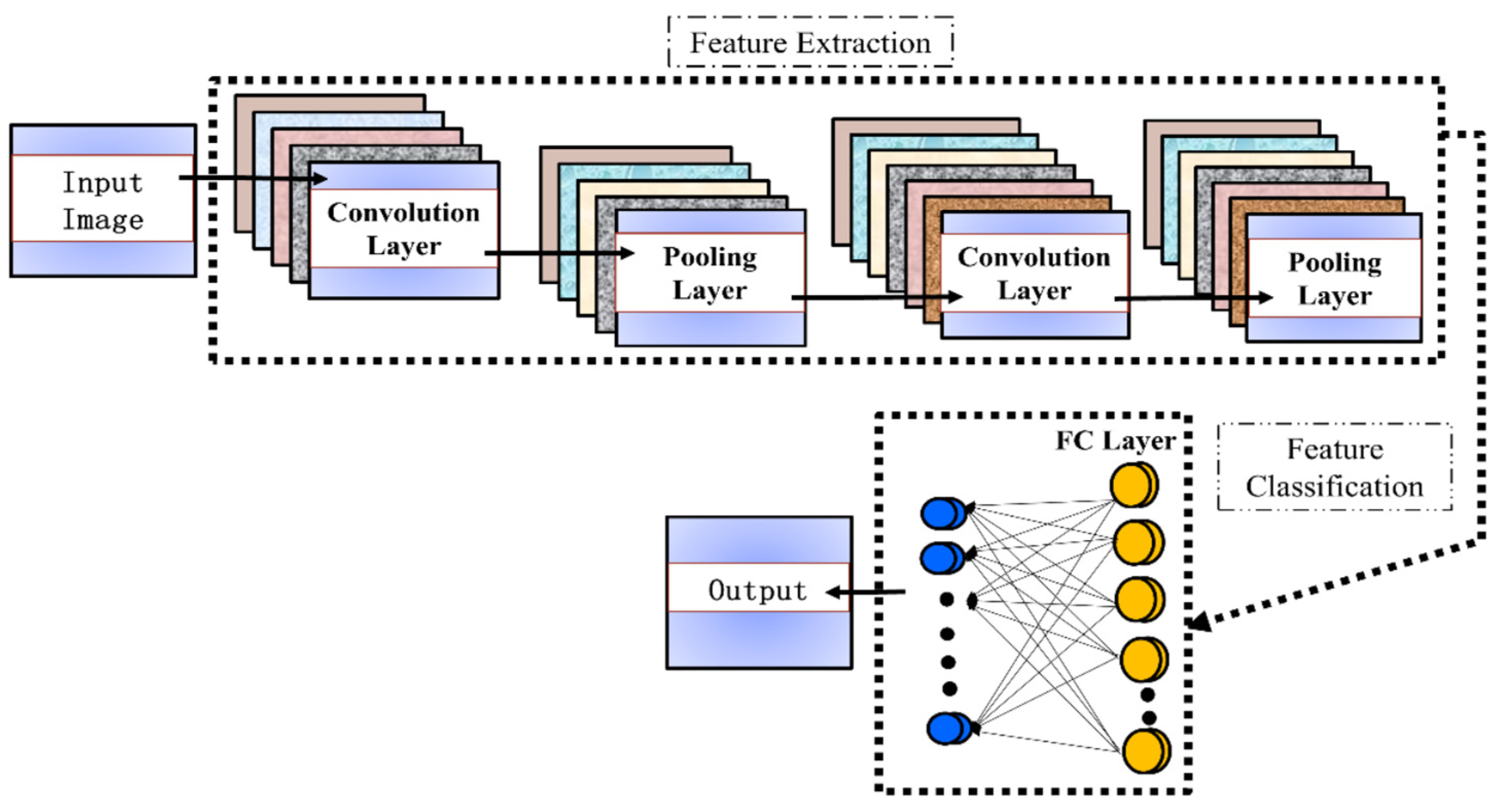
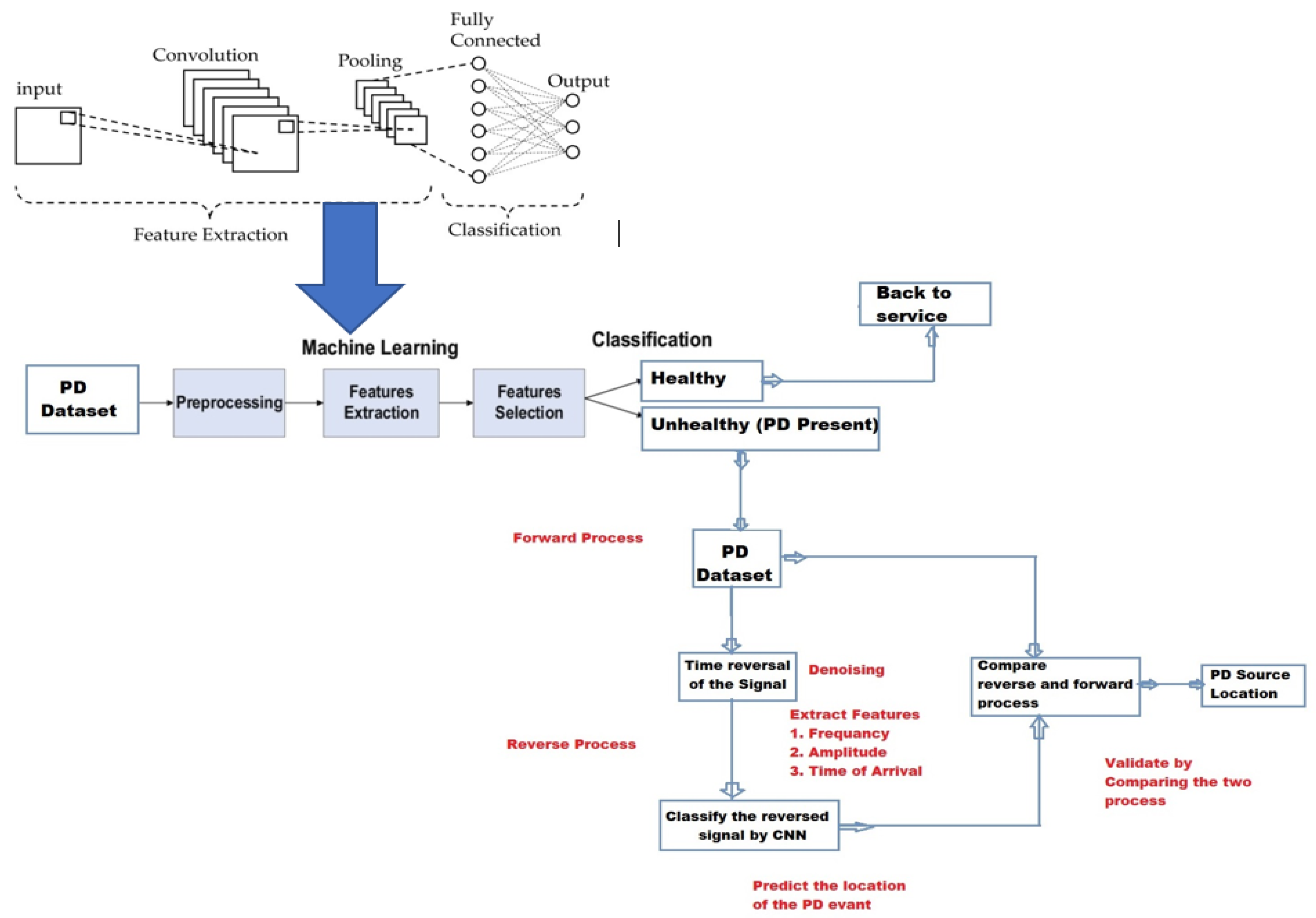
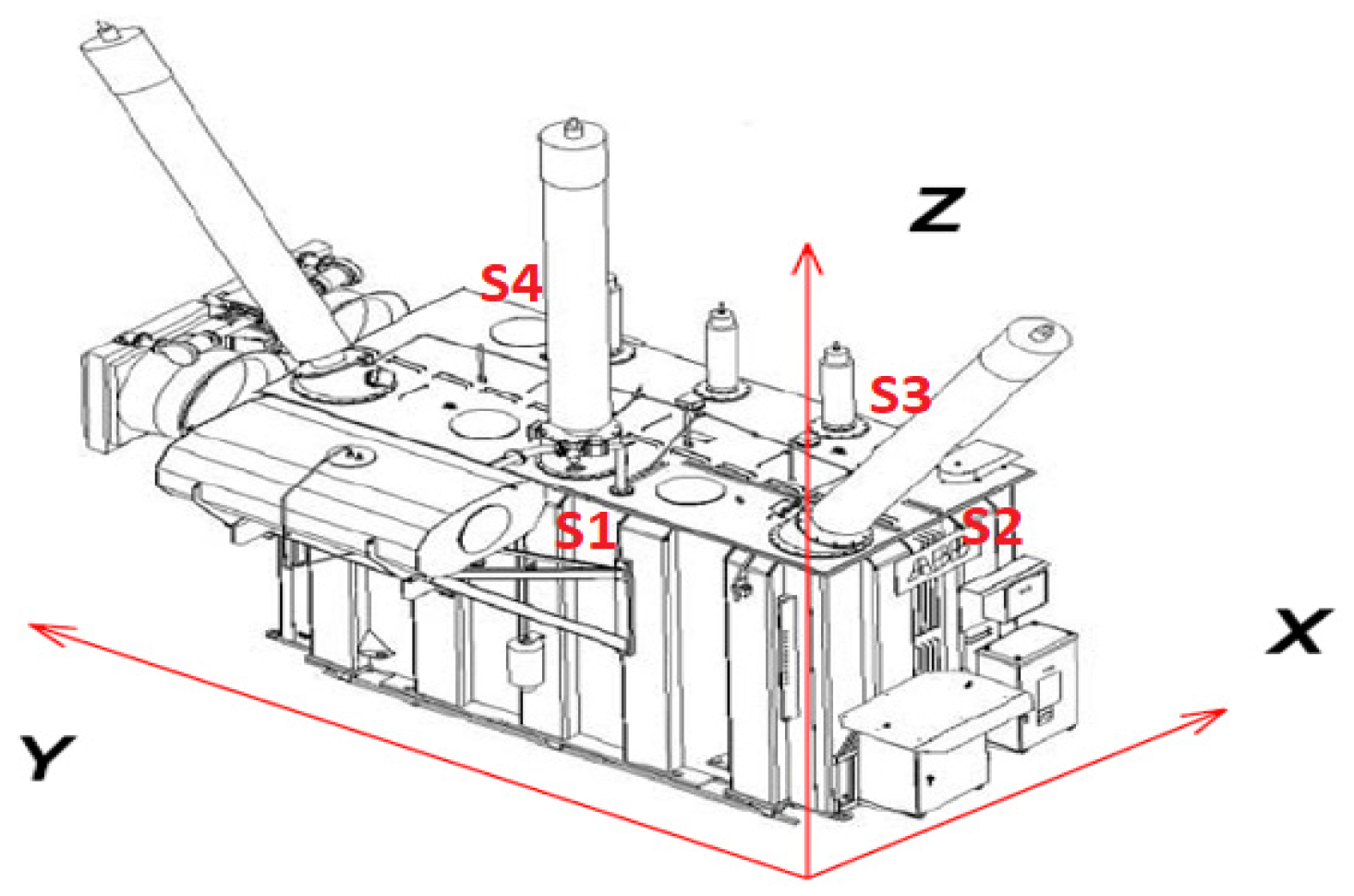

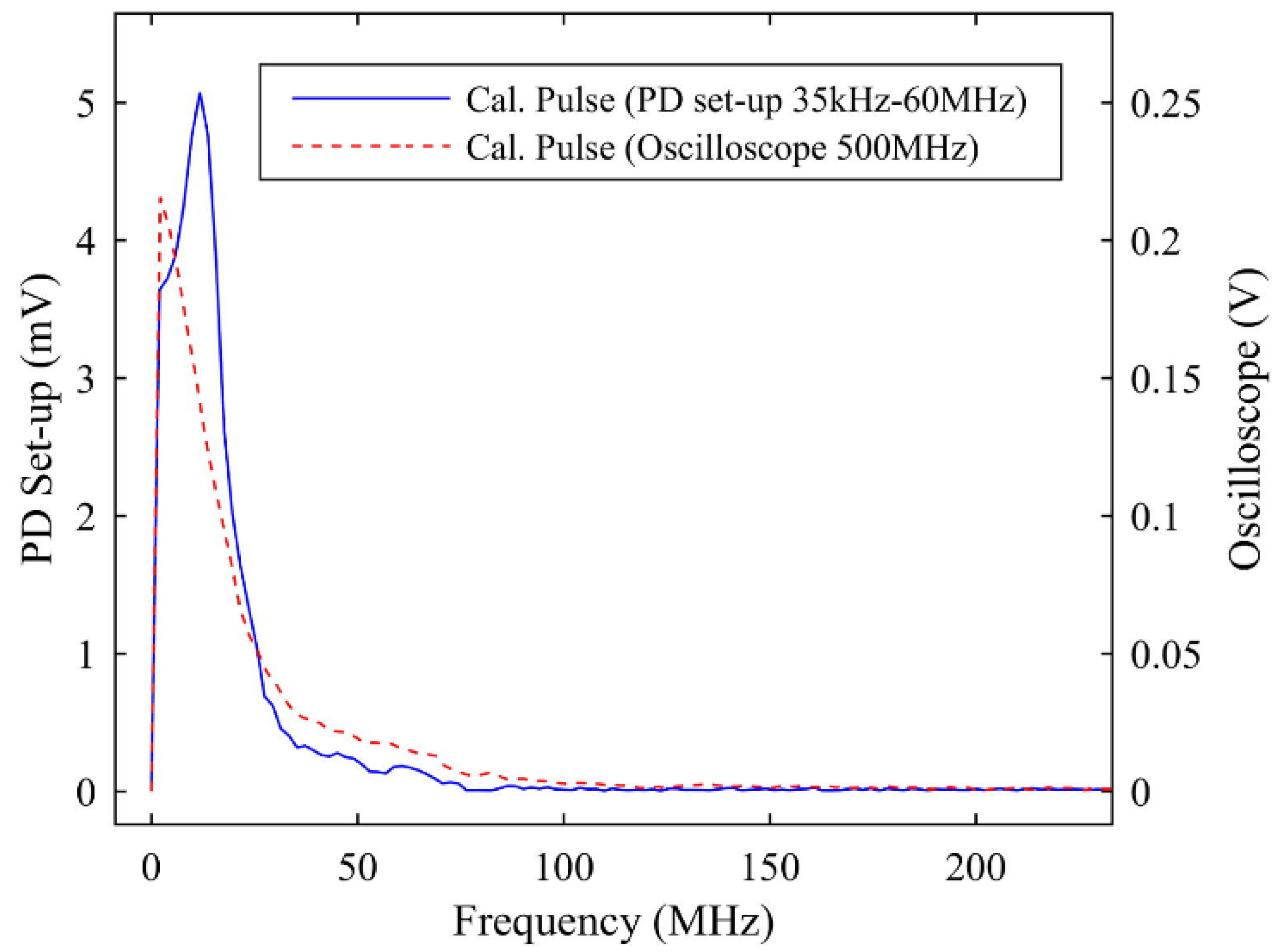
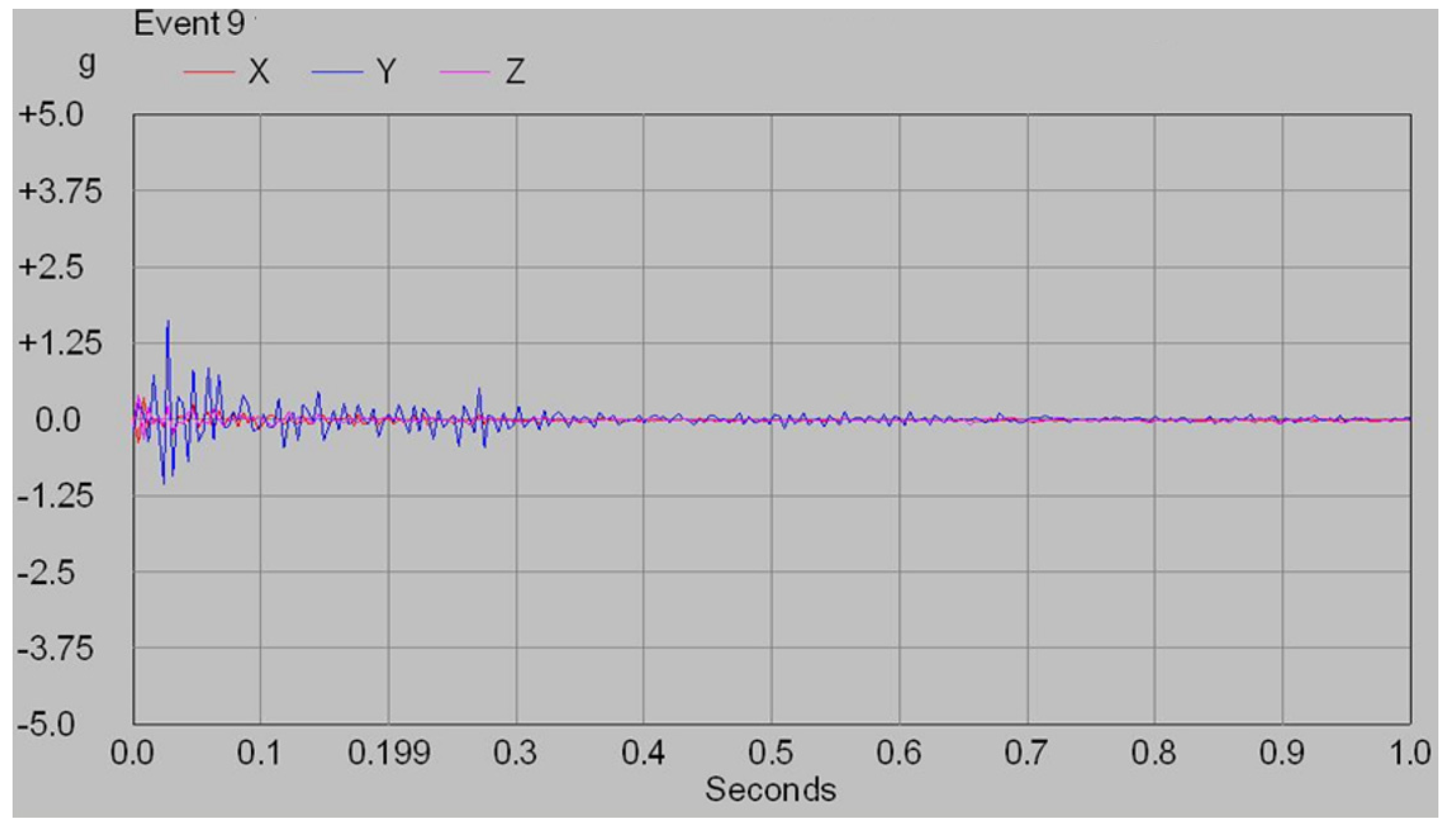


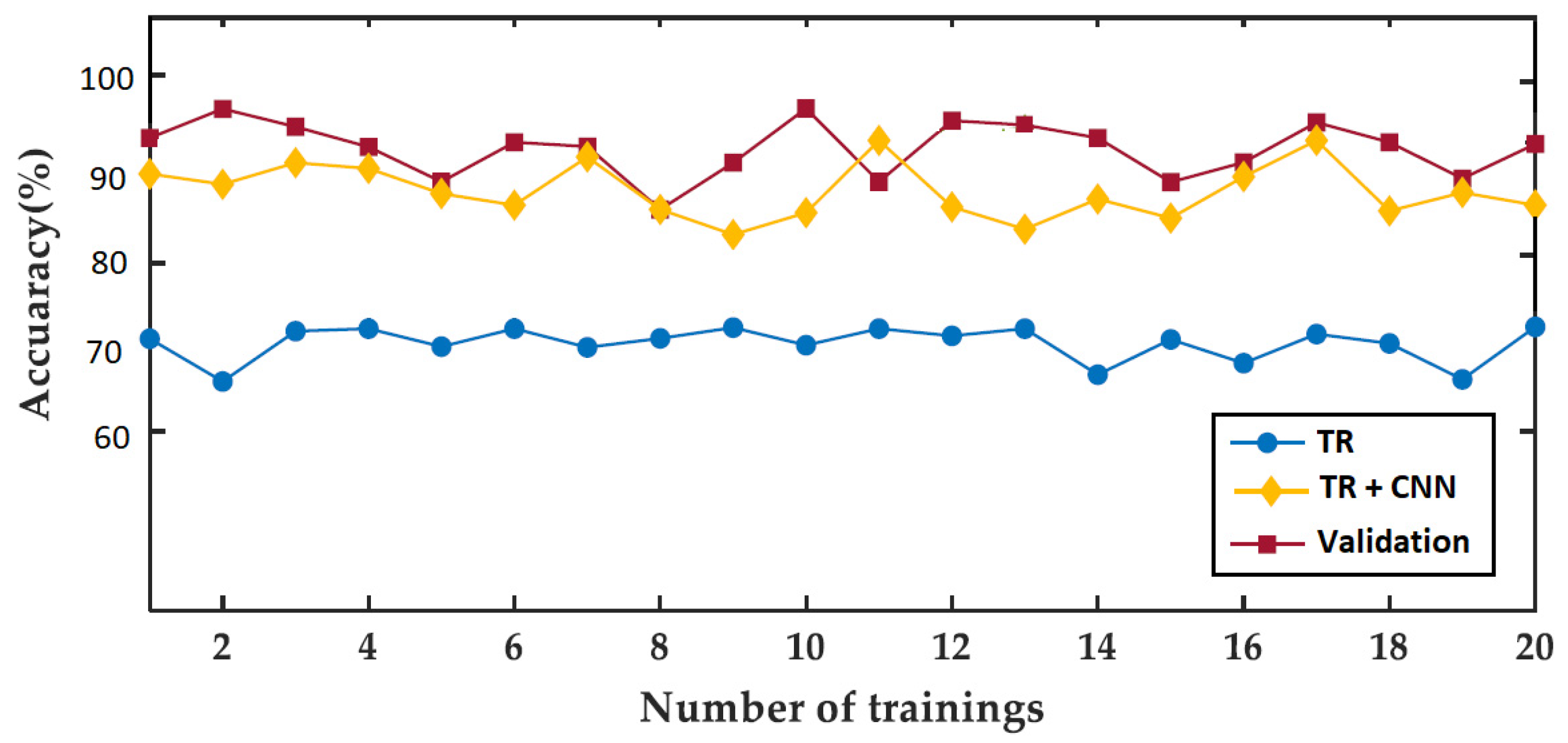

| Location (mm) | S1 | S2 | S3 | S4 |
|---|---|---|---|---|
| (70, 50) | 0.13 | 0.10 | 0.12 | 0.10 |
| (80, 70) | 0.23 | 0.18 | 0.22 | 0.25 |
| (90, 60) | 0.18 | 0.20 | 0.21 | 0.23 |
| (100, 50) | 0.14 | 0.12 | 0.13 | 0.12 |
| (110, 70) | 0.20 | 0.21 | 0.23 | 0.20 |
| (120, 60) | 0.19 | 0.22 | 0.21 | 0.23 |
| (130, 50) | 0.13 | 0.11 | 0.12 | 0.10 |
| (140, 70) | 0.21 | 0.24 | 0.23 | 0.22 |
| (150, 60) | 0.20 | 0.18 | 0.22 | 0.23 |
| (160, 50) | 0.15 | 0.13 | 0.14 | 0.12 |
| Metric | Value (%) |
|---|---|
| Accuracy | 72.6 |
| Precision | 73.1 |
| Recall | 71.9 |
| F1-Score | 72.5 |
| Layers | Type | Filter Size | Stride | Kernel | Input Size | Parameters |
|---|---|---|---|---|---|---|
| Layer 1 | Conv2-D | 3 × 3 | 1 | 64 | 256 × 256 × 1 | 576 |
| Layer 2 | Pooling | 2 × 2 | 2 | - | 256 × 256 × 64 | - |
| Layer 3 | Conv2-D | 3 × 3 | 1 | 128 | 128 × 128 × 64 | 73,728 |
| Layer 4 | Pooling | 2 × 2 | 2 | - | 128 × 128 × 128 | - |
| Layer 5 | Conv2-D | 3 × 3 | 1 | 256 | 64 × 64 × 128 | 294,912 |
| Layer 6 | Pooling | 2 × 2 | 2 | - | 64 × 64 × 256 | - |
| Layer 7 | Conv2-D | 3 × 3 | 1 | 512 | 32 × 32 × 256 | 1,179,648 |
| Layer 8 | Pooling | 2 × 2 | 2 | - | 32 × 32 × 512 | - |
| Layer 9 | Fully Connected | - | - | 4096 | 16 × 16 × 512 | 2,097,152 |
| Layer 10 | Output Layer | - | - | 8 | 4096 | 32,776 |
| Learning Rate | Batch Size | Average Accuracy |
|---|---|---|
| 0.001 | 680 | 90.40 |
| 0.001 | 500 | 89.00 |
| 0.001 | 300 | 88.95 |
| 0.001 | 200 | 88.93 |
| Metric | Value (%) |
|---|---|
| Accuracy | 90.4 |
| Precision | 90.2 |
| Recall | 90.6 |
| F1-Score | 90.4 |
| Metric | Time Reversal (%) | Integration with CNN (%) |
|---|---|---|
| Diagnostic Accuracy | 75 | 92 |
| Sensitivity | 60 | 85 |
| Specificity | 80 | 92 |
| Computational Efficiency | 90 | 75 |
| Robustness | 70 | 95 |
| Generalisation | 65 | 88 |
| Practical Applicability | 85 | 78 |
| User-friendliness | 88 | 65 |
Disclaimer/Publisher’s Note: The statements, opinions and data contained in all publications are solely those of the individual author(s) and contributor(s) and not of MDPI and/or the editor(s). MDPI and/or the editor(s) disclaim responsibility for any injury to people or property resulting from any ideas, methods, instructions or products referred to in the content. |
© 2023 by the authors. Licensee MDPI, Basel, Switzerland. This article is an open access article distributed under the terms and conditions of the Creative Commons Attribution (CC BY) license (https://creativecommons.org/licenses/by/4.0/).
Share and Cite
Sekatane, P.M.; Bokoro, P. Time Reversal vs. Integration of Time Reversal with Convolution Neural Network in Diagnosing Partial Discharge in Power Transformer. Energies 2023, 16, 7872. https://doi.org/10.3390/en16237872
Sekatane PM, Bokoro P. Time Reversal vs. Integration of Time Reversal with Convolution Neural Network in Diagnosing Partial Discharge in Power Transformer. Energies. 2023; 16(23):7872. https://doi.org/10.3390/en16237872
Chicago/Turabian StyleSekatane, Permit Mathuhu, and Pitshou Bokoro. 2023. "Time Reversal vs. Integration of Time Reversal with Convolution Neural Network in Diagnosing Partial Discharge in Power Transformer" Energies 16, no. 23: 7872. https://doi.org/10.3390/en16237872
APA StyleSekatane, P. M., & Bokoro, P. (2023). Time Reversal vs. Integration of Time Reversal with Convolution Neural Network in Diagnosing Partial Discharge in Power Transformer. Energies, 16(23), 7872. https://doi.org/10.3390/en16237872







